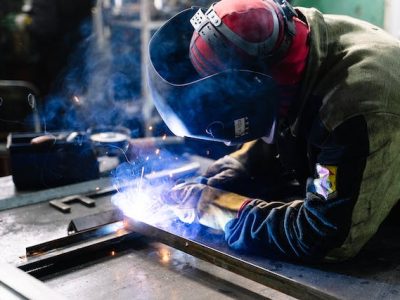
Wood and Steel
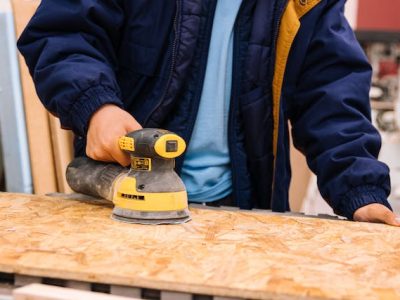
Woodworking
Woodworking is a rewarding and creative industry and it comes with inherent risks, particularly concerning the generation of wood dust. The need for effective dust extraction systems in the woodworking industry is paramount to safeguarding both workers health and overall operational efficiency. According to the Australian Government’s Department of Health and Safety, exposure to wood dust poses significant respiratory and dermatological health risks, with long-term consequences such as chronic bronchitis and occupational asthma. To mitigate these risks Australian woodworking enterprises should adhere to the Australian/New Zealand Standard AS/NZS 4024.1:2014, which outlines safety requirements for machinery and equipment.
In compliance with these standards, implementing robust dust extraction systems becomes imperative. The Australian Work Health and Safety Act emphasizes the duty of employers to provide a safe working environment and this extends to the woodworking industry. Efficient dust extraction not only protects workers from respiratory issues but also reduces the risk of combustible dust explosions, a hazard highlighted by Safe Work Australia.
Micronair has been providing dust extraction systems for cabinet makers, joiners and the woodworking sector for over 20 years that align with Australian regulations and standards, safeguarding the well-being of workers and fostering a safer and more sustainable industry.
Mechanical Surface Finishing
Mechanical surface finishing operations such as grinding, sanding, or polishing, generate airborne particles and fumes that pose significant health and safety risks to workers and can compromise the quality of the finished product. Workplace safety in Australia is governed by various standards, such as those established by Safe Work Australia and specific industry guidelines.
Effective dust and fume extraction systems play a crucial role in maintaining a safe working environment by capturing and removing airborne contaminants. In accordance with Australian standards, implementing extraction solutions helps companies comply with occupational health and safety regulations by reducing the risk of respiratory issues and long-term health problems for workers.

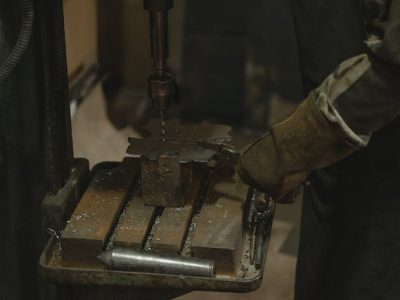
Metal Processing
Metal processing businesses require effective dust and fume extraction systems to ensure a safe and healthy working environment and complying with Australian standards. The regulatory framework for occupational health and safety places a strong emphasis on controlling hazardous substances, including metal dust and fumes, to protect workers from potential health risks.
According to Safe Work Australia, exposure to metal dust and fumes can lead to respiratory issues, skin irritation, and long-term health problems. Implementing proper dust and fume extraction systems is crucial to mitigate these risks. The Australian Standard AS/NZS 1678.1:1998 outlines the guidelines for designing, installing, and maintaining local exhaust ventilation systems – a key component of effective dust and fume extraction. This standard ensures that businesses adhere to nationally recognized practices to safeguard the health of workers.
The Work Health and Safety Act 2011 (Cth) also mandates employers to provide a safe working environment including controlling airborne contaminants. Failure to comply with these standards not only jeopardizes the well-being of employees but also exposes businesses to legal liabilities. Investing in robust dust and fume extraction systems not only aligns with Australian regulations but also contributes to the overall welfare of workers and the production capabilities.
Smelting, Foundries & Refining
Dust and fume extraction play a crucial role in the smelting, foundries, and refineries industry in ensuring a safe and healthy working environment for employees while adhering to government standards. The extraction of particulate matter is imperative due to the hazardous nature of the materials involved in these processes, such as metals and chemicals, which can pose serious health risks when inhaled.
In Australia the Work Health and Safety (WHS) Act and associated regulations emphasize the importance of controlling exposure to airborne contaminants. The Australian Institute of Occupational Hygienists (AIOH) outlines guidelines for assessing and managing airborne contaminants in the workplace, emphasizing the need for effective extraction systems in industrial settings. Additionally, the Australian Standard AS/NZS 1715:2009 specifies the performance requirements for respiratory protective devices reinforcing the importance of controlling airborne hazards.
Smelting and refining activities often release fine particulate matter and fumes, including potentially toxic substances such as heavy metals and volatile organic compounds. Micronair provides dust and fume extraction systems that are not only compliant with Australian standards but help mitigate these risks by capturing and removing airborne contaminants, safeguarding the health and well-being of workers. Implementing these systems not only aligns with legal requirements but also fosters a culture of workplace safety, contributing to the overall sustainability and success of the industry.
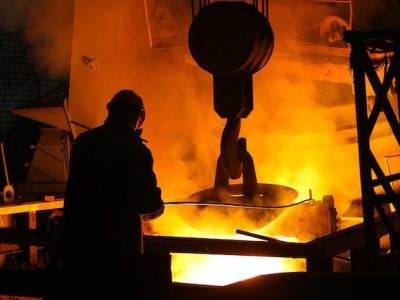
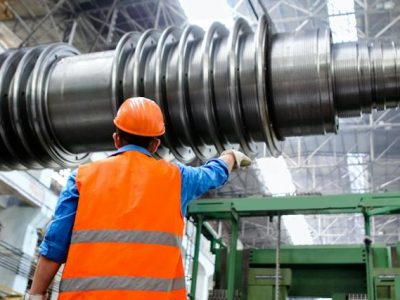
Steel Fabrication
Effective dust and fume extraction is imperative for steel fabricators as it plays a crucial role in ensuring a safe and healthy working environment. The inhalation of airborne particles generated during steel fabrication processes can pose serious health risks including respiratory issues and long-term diseases. To address these concerns some of the Australian standards such as AS/NZS 1715:2009 and AS/NZS 1716:2012 emphasize the importance of implementing effective control measures, including dust and fume extraction systems, to safeguard workers’ health.
A study conducted by Safe Work Australia highlights the significant health hazards associated with exposure to metal dust and fumes in the workplace. The report emphasizes the need for employers to comply with the Work Health and Safety Regulations, which mandate the control of hazardous substances at the source through extraction systems. Additionally, the Australian Institute of Occupational Hygienists (AIOH) emphasizes the importance of using extraction systems that meet Australian standards to minimize the risk of exposure to harmful particulates.
Not only is it a legal requirement under Australian workplace safety regulations, but also a crucial measure to protect the health and well-being of steel fabricators. Adhering to Australian standards ensures a comprehensive approach to occupational health and safety, creating a safer and more productive working environment for all involved.
Timber
The timber industry necessitates effective dust and fume extraction systems to mitigate health and safety risks while promoting environmental sustainability. In Australia the timber processing sector encompassing sawmills and woodworking facilities that generate substantial dust and fumes during various manufacturing processes. Wood dust is a common byproduct that poses serious health hazards including respiratory issues and potential carcinogenic effects.
Australian standards such as AS/NZS 1680.2.5:2012 emphasize the importance of maintaining indoor air quality and controlling airborne contaminants. Micronair’s dust and fume extraction systems align with these standards, ensuring compliance with occupational health and safety regulations and safeguarding the well-being of workers. The Australian Timber Importers Federation (ATIF) and the Timber Preservers Association of Australia (TPAA) further advocate for comprehensive extraction systems to enhance workplace safety.
Efficient extraction systems also contribute to environmental responsibility by reducing emissions and minimizing the impact of timber processing on air quality. The Australian Forestry Standard (AFS) underscores the industry’s commitment to sustainable practices, making dust and fume extraction an integral part of responsible timber manufacturing.
Micronair’s extraction systems have been working with the timber industry in Australia to not only prioritize the health and safety of its workforce, but also help align with national and international benchmarks for environmental stewardship.

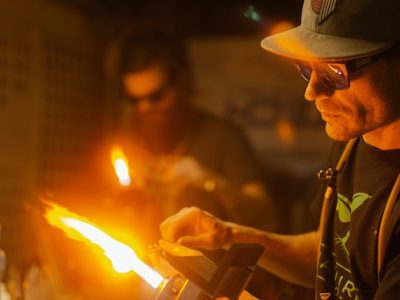
Thermal Cutting
Effective dust and fume extraction in thermal cutting, such as plasma or oxy-fuel cutting, is crucial for maintaining a safe and healthy work environment. The cutting process generates hazardous by-products including fine particulate matter and noxious fumes, which pose serious health risks to workers if not properly controlled. Exposure to these airborne contaminants can lead to respiratory issues, eye irritation and long-term health problems.
Australian occupational health and safety standards, such as those outlined by Safe Work Australia, emphasize the importance of controlling airborne contaminants in the workplace. Adhering to standards and guidelines specific to thermal cutting operations is imperative for compliance and ensuring the well-being of workers.
Micronair implements dust and fume extraction systems that not only align with these standards, helping companies meet their duty of care to employees, but in most cases exceed the standard. These systems not only protect the workforce but also contribute to overall workplace safety and regulatory compliance in the Australian industrial sector.
Welding
Welding processes generate hazardous fumes and dust containing various metallic oxides and other potentially harmful substances. Prolonged exposure to these airborne contaminants poses serious health risks for welders, including respiratory and systemic issues. In Australia, safety regulations and standards, such as those set by Safe Work Australia and the Australian/New Zealand Standard AS/NZS 1715:2009 for respiratory protection, emphasize the importance of controlling exposure to airborne contaminants in industrial settings.
Efficient dust and fume extraction systems are crucial to maintaining a safe working environment for welders. Extraction systems from Micronair help capture and remove airborne particles at the source, preventing their dispersion into the surrounding air. Compliance with Australian standards ensures that these extraction systems meet specific criteria for effectiveness and safety.
Implementing proper extraction measures aligns with the broader framework of occupational health and safety regulations in Australia, safeguarding the well-being of welders and promoting a workplace environment that adheres to national standards.
